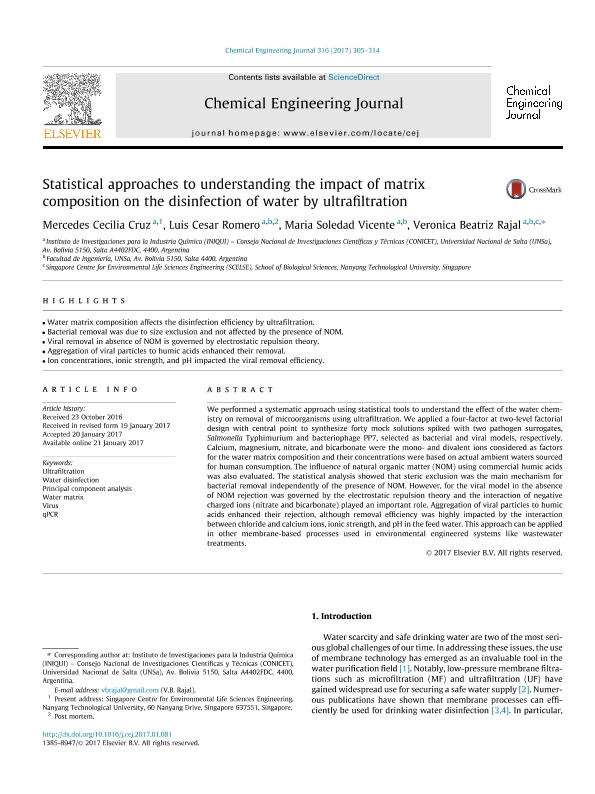Artículo
Statistical approaches to understanding the impact of matrix composition on the disinfection of water by ultrafiltration
Fecha de publicación:
05/2017
Editorial:
Elsevier Science Sa
Revista:
Chemical Engineering Journal
ISSN:
1385-8947
Idioma:
Inglés
Tipo de recurso:
Artículo publicado
Clasificación temática:
Resumen
We performed a systematic approach using statistical tools to understand the effect of the water chemistry on removal of microorganisms using ultrafiltration. We applied a four-factor at two-level factorial design with central point to synthesize forty mock solutions spiked with two pathogen surrogates, Salmonella Typhimurium and bacteriophage PP7, selected as bacterial and viral models, respectively. Calcium, magnesium, nitrate, and bicarbonate were the mono- and divalent ions considered as factors for the water matrix composition and their concentrations were based on actual ambient waters sourced for human consumption. The influence of natural organic matter (NOM) using commercial humic acids was also evaluated. The statistical analysis showed that steric exclusion was the main mechanism for bacterial removal independently of the presence of NOM. However, for the viral model in the absence of NOM rejection was governed by the electrostatic repulsion theory and the interaction of negative charged ions (nitrate and bicarbonate) played an important role. Aggregation of viral particles to humic acids enhanced their rejection, although removal efficiency was highly impacted by the interaction between chloride and calcium ions, ionic strength, and pH in the feed water. This approach can be applied in other membrane-based processes used in environmental engineered systems like wastewater treatments.
Archivos asociados
Licencia
Identificadores
Colecciones
Articulos(INIQUI)
Articulos de INST.DE INVEST.PARA LA INDUSTRIA QUIMICA (I)
Articulos de INST.DE INVEST.PARA LA INDUSTRIA QUIMICA (I)
Citación
Cruz, Mercedes Cecilia; Romero, Luis Cesar; Vicente, María Soledad; Rajal, Verónica Beatriz; Statistical approaches to understanding the impact of matrix composition on the disinfection of water by ultrafiltration; Elsevier Science Sa; Chemical Engineering Journal; 316; 5-2017; 305-314
Compartir
Altmétricas




